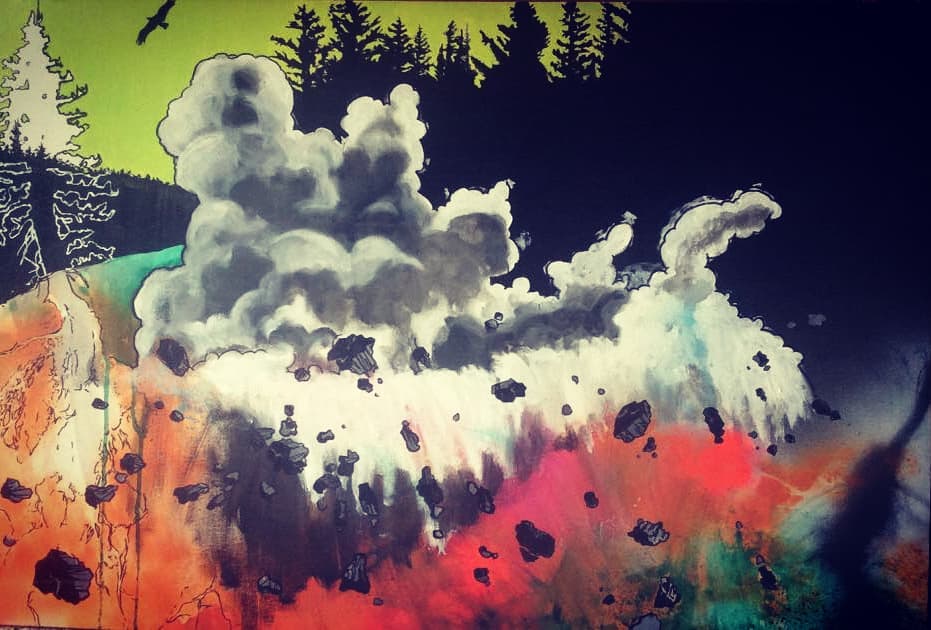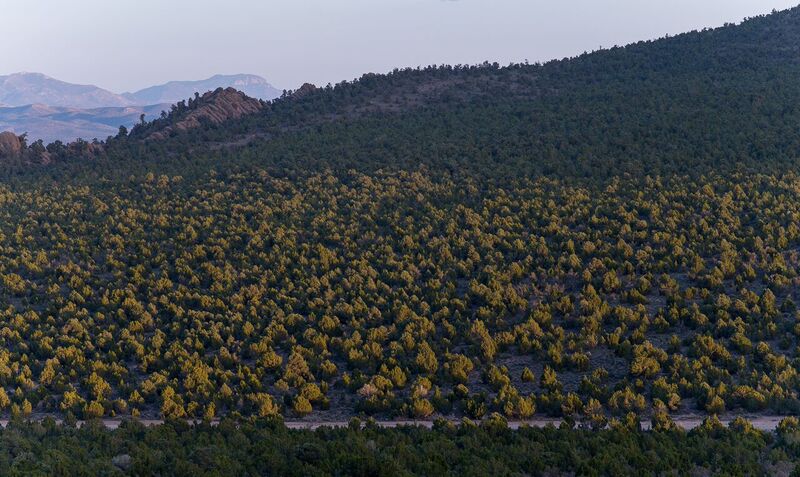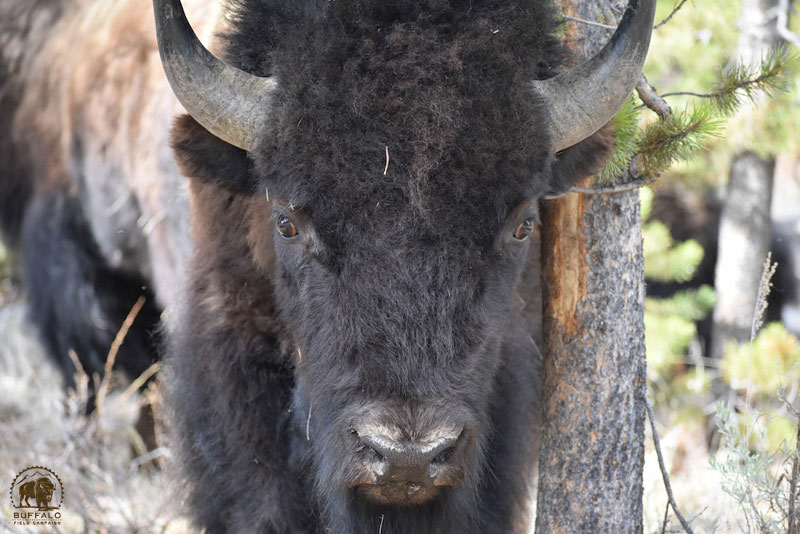
by DGR News Service | Jan 12, 2021 | Biodiversity & Habitat Destruction, Climate Change, Indigenous Autonomy
by The Invisible Warrior / Illahee Spirit Runners
I have been asked to write a letter to someones grandchildren for the solstice. I think this fitting since i have no children. Sometimes i think of the movement as my children and is certainly a consideration when devoting to this path. 7 generations.
To all the grandchildren i have this message for you. As some of you know the world is in dire condition. Many of you have been born into a world where your existence and quality of life is questionable. Despite this please try to rise to the occasion and meet the challenges of your generation head on with dignity and determination. Defend your communities and the natural world. Challenge yourself to learn your roots. It helps to know where your coming from to know where your going. Try to get back to your roots before industrial civilization. Form sustainable habits. Find ways to give back to the earth who truly is our mother and source of your true power. Benefit and restore her whenever possible. Stick up for people. Stick up for all the creatures of the world the swimmers, the four legged, those crawlers and those who fly. Extinction is a major issue you will face in your lifetime. It will be difficult. Do it anyway. More people are coming to join you because there is no turning away from this truth. You will face climate catastrophe. Over 200 species go extinct each day. In the Anishinaabe wolf story it explains that what happens to the wolf will also happen to human kind. Remember not to be so worried about what people think of you that it prevents you from making a stand. On difficult days try to remember the animals and forests you fought for. Your causes. Put some water or tobacco on the ground from time to time.
If there was any wisdom i wanted to leave the youth was that we set out to prove wolves are sacred to the tribes of Turtle Island and they are. Wolves like humans in their ancient forms are what science calls a keystone species. This means they benefit the natural world around them. Its a compass telling you where to go, where to return to. How to find your way home.
Regularly study martial arts. One of the most useful things you can do for this world. Keep your self capable, and fortified. Do this for the planet so you can respond in defense of her, do this for your community, your family, lastly do this for yourself. This way you can protect. Solve problems as they arise. Build your mind and your spirit by building your body. Do this so your as a responsibility to pull your own weight. Be your own security. This is especially important for women so you don’t have to run to a man or the system for help, you can handle it right there on the spot. This is a huge and overlooked solution to many of the problems we face today.
At times it will seem difficult to work with other people and the people will be divided. Seek unity and collaboration where you can and hold it in high regard. The wolf teaches us to work together. That we are strong together. Community. This is the same for humans. Individuality is a lie. Contribute to the lives and well being of others. Seek to deeply understand the meaning of family in life. Be present for them. This is a very important time to be alive. Embrace it.
Wishing you the best winter solstice.

by DGR News Service | Jan 29, 2020 | Music & Art
Featured image: Resistance. Acrylic on canvas. 2008. By Travis London. “With the successful devastation of the Washougal River watershed through intense logging and mineral extraction, there was only one thing left to do: install hydroelectric dams. In the early 1920s, construction of a third dam began down river from the outlet of Cougar Creek. The night the dam had been completed it was blown up. Dynamite reduced the structure to rubble and once again the salmon, eels, and crayfish passed unhindered.”
To this day, the Washougal River remains free flowing and supports populations of chum, coho, and chinook salmon, steehead, and cutthroat trout.
Truth
By John McGrath, 2004
Who will be the keepers of the flame,
when shepherds shame their flock and mock
the truth with every new transgression?
Should we be surprised to find a fork in every tongue
of young and old, when those who lead us
feed us daily, lies of such a size
we barely blink at indiscretion any more
from rank deceivers rotten to the core.
Yet some would call them heroes, after all
they’ve said and done
with word and deed, the very need
to justify themselves long gone.
Who will be the guardians of the light?
When might is right and wrongs are sanctified,
when innocence is maimed and sacrificed
in Freedom’s name,
when none will take the blame,
when every lie is truth and truth is lie,
Who then will be the keepers of the flame,
save you and I?

No, we are not going to Mars
A poem about stupid ideas
By Monique Milne
Some philosophers say
You define a thing by the context it’s in.
So, what then … is a polar bear in a zoo?
Or a human on Mars?
Am I the sum of my parts? Something more? Something separate?
They say bacteria are us
Or we have bacteria.
A sterilised planet has no life
Has no bacteria
Bacteria are life.
What do you call a human on Mars, going to Mars, dreaming of Mars?
Is a machine alive?
When every machine and computer rusts
We’ll still be here!
If the Earth turned to rust
No more humans.
Can’t make humans from machines.
LA hipsters know all about machines.
Use them to ‘hack’ your body.
Watch out for cell towers
The illuminati hacking you
Our bodies are meat-suits
That our soul inhabits
Our beautiful natural bodies
Meat Suits!
What part of you is your soul?
What of us is and always will be our body?
Breathing, laughing, crying, blinking
Breathe.
Your feelings are the real you
What does the feeling?
No, your real physical body is immaterial
Better hack your meat suit
Be better looking
Live a lot longer
Your true identity … Martian
Such a spiritual experience.
What ever happened to seeing?
Rejecting our bodies
Rejecting our Earth
Put your meat suit
In a space suit
And fly to Mars
Where you belong.
But you are not an alien
You belong here
You deserve your body.
They
By Jeremiah Potter
They drug them
by their necks
away from the sacred
Fire
to the televisionThey murdered
the buffalo, deer
and bounty itself
to feed them Wonder Bread
and pork
They poisoned their
rivers, streams, lakes
and oceans
to force them to drink
swimming pool water and liquor
They beat them
with Bibles
and the cross
in fear of
the beauty of worshiping the earth
They stole all that
sustained them
to smudge out
their freedom
to tax them
on the land
that was loved and defended-
their land
that can never
be owned or divided
Sitting here by this smokey fire
under the winter dogwoods,
maples, birch and hemlocks,
in the vivid sun,
I divide myself.
As I always have.
Vowing to not be like
they-
colonist thieves, rapists and murderers
I vow not to
bury and squash
what has been,
and still is,
being done.
I vow,
to like them,
love the land and its
Inhabitants.
To turn my shoulder
to what they say
is right and wrong-
things so displaced
from actual honesty.
I vow to stand
against the utter
insanity of they-
in pure want of excess
and unchecked desecration.
Salmon
By Max Wilbert
Seen on a sign
at the Quileute reservation
“the salmon helped us for thousands of years
now it is time for us to help them”

by DGR News Service | May 13, 2019 | Biodiversity & Habitat Destruction, The Solution: Resistance
via The Pinyon-Juniper Alliance
The Pinyon-Juniper Alliance was formed several years ago to protect Pinyon-Pine and Juniper forests from destruction under the BLM’s and Forest Service’s misguided “restoration” plan. Since that time, we have attended public meetings, organized petitions, talked with politicians and locals, coordinated with other groups, written articles and given presentations, and commented on public policy.
Things now are worse than ever. The latest project we’ve seen aims to remove PJ forest from more than 130,000 acres of Grand Staircase-Escalante National Monument. That’s more than 200 square miles in one project.
Everywhere we go, we see juniper trees cut. Most recently, just this past weekend in Eastern Oregon, an entire mountainside was littered with chainsawed juniper trees. Earlier today, one of our organizers spoke with an elder from the Ely-Shoshone Tribe. She told us about two conversations she had with agency employees who referred to old pinyon-pines as “useless” trees that needed to be removed. She responded by saying “I wouldn’t be here without those trees,” and told them about the importance of pine nuts to Great Basin indigenous people.
And still the mass destruction continues.
However, looming behind these atrocities is an even bigger threat. Due to global warming, drought is becoming almost continuous throughout most of the intermountain West. The possibility of a permanent dust bowl in the region appears increasingly likely as governments worldwide have done nothing to avert climate catastrophe.
Pinyon-Pine and Juniper are falling to the chainsaw. However, they have been able to survive the saws of men for two hundred years. It is unlikely they will be able to survive two hundred years of unabated global warming.
The biggest threat to Pinyon-Juniper forests isn’t chainsaws or the BLM. The biggest threat is the continuation of industrial civilization, which is leading to climate meltdown. Stopping industrial civilization would limit this threat, and would also stop the flow of fossil fuels that powers the ATVs and Masticators and Chainsaws currently decimating Pinyon-Juniper forests.
Derrick Jensen has said that often people who start out trying to protect a certain forest or meadow end up questioning the foundations of western civilization. We have undergone this process ourselves.
Given our limited time, energy, and resources, our responsibility is to focus on what we see as the larger threats. Therefore, the founders of the Pinyon-Juniper Alliance have turned to focus on revolutionary work aimed at overturning the broader “culture of empire” and the global industrial economy that powers it. We are not leaving the PJ struggle behind. If you are engaged in this fight, please reach out to us. We need to network, share information, and work together to have a chance of success. We are shifting the form of our struggle. If this struggle is won, it will result in a world that Pinyon-Juniper forest can inhabit and spread across freely once again. And if it’s lost, our work at the local level is unlikely to matter. There are few revolutionaries in the world today, and we have a responsibility to do what is necessary.
by DGR News Service | May 7, 2019 | Biodiversity & Habitat Destruction
By Will Falk and Sean Butler / Voices for Biodiversity
On December 18, 2018, the Center for Biological Diversity and the Wild Fish Conservancy threatened the Trump administration with a lawsuit under the Endangered Species Act (ESA) for allowing salmon fisheries to take too many salmon, which the critically endangered Southern Resident orcas depend on for food.
The impulse to protect the orcas is a good one. Southern Resident orcas are struggling to survive — only 75 remain. According to the statement by the Center for Biological Diversity and Wild Fish Conservancy, “The primary threats to Southern Resident killer whales are starvation from lack of adequate prey (predominantly Chinook salmon), vessel noise …that interferes with … foraging … and toxic contaminants that bioaccumulate in the orcas’ fat.”
You probably assume, when reading that list of primary threats to the orcas, that the threatened lawsuit would demand an end to these harmful activities. But it doesn’t. Instead, the organizations are merely asking the National Marine Fisheries Service — the agency responsible for issuing permits to Pacific coast fisheries — to deal with alleged violations of the ESA.
The Center for Biological Diversity and the Wild Fish Conservancy aren’t asking that activities harmful to Chinook salmon, and consequently to the Southern Resident orcas, be stopped. They aren’t asking for noisy vessels that disturb the whales’ foraging behaviors to be prohibited. They aren’t even asking for an end to the toxic contaminants that accumulate in the whales’ fat.
Why aren’t they asking for any of these things? Because under American law they aren’t allowed to ask for them.
All they are asking is that these harmful activities receive the proper permits.
Right now, laws like the Endangered Species Act are the main legal means for protecting threatened species and habitat in the United States. But these laws only allow us to challenge permit applications and ask that projects complete the permit process.
While it may hard to believe, these permits are designed to give permission to cause harm. Regulatory agencies only regulate the amount of harm that takes place. They do not, and cannot, stop ecocide. Instead they allow for softer, sometimes slower versions of ecocide.
To understand this, it helps to know a bit about how the Endangered Species Act actually works. The Act prohibits any person, including any federal agency, from “taking” an endangered species without proper authorization. “Take” is defined as: “to harass, harm, pursue, hunt, shoot, wound, kill, trap, capture, or collect, or to attempt to engage in any such conduct.”
You might expect that the Act completely prohibits any activity that “takes” an endangered species. But it doesn’t. Under the Act, federal agencies may harm members of an endangered species as long as the activity is “not likely to jeopardize the continued existence of any endangered species.”
While that may sound more promising, it isn’t. When a proposed action is likely to jeopardize an endangered species, the agency can then issue an Incidental Take Statement (ITS), which merely sets a limit on the number of individuals of an endangered species that can be taken.
In other words, a species that has already endured so much destruction can legally be further harmed if that harm is in compliance with certain terms and the correct forms are filled out.
So an ITS allows a federal agency to harm endangered species. But there are also Incidental Take Permits (ITPs). These allow private entities to harm endangered species. All a private entity needs to do to get an ITP is create a plan that purportedly minimizes and mitigates harm to an endangered species.
The irony is not lost on Professor J.B. Ruhl, who describes the situation in his aptly-titled law review article, “How to Kill Endangered Species, Legally”:
“Rather, when we strip away its noble purpose… at bottom the ESA is little different from the modern pollution control statutes which broadly prohibit a defined activity with one hand, then with the other hand give back authority to do the same activity under regulated conditions.”
In the original 1973 version of the Endangered Species Act, ITS and ITP exemptions did not exist. They are the result of amendments passed by Congress in 1982 to undermine several pro-environmental Supreme Court decisions that interpreted the Act as broadly protecting endangered species. Those amendments are a powerful and dangerous loophole.
In a 2011 report, a trial attorney with the Environmental Crimes Section of the U.S. Department of Justice, Patrick Duggan, found that ITPs are being issued at alarming rates — and with ever-broader scopes. “In the first decade after the 1982 Amendments, there were 14 ITPs issued, by August 1996, there were 179, and by April 2010, there were 946 approved by the U.S. Fish and Wildlife Service (FWS) alone.” Even FWS has acknowledged this trend of permissiveness, recently noting how the number of approved plans has “exploded.”
Most people mistakenly believe that regulations are being enforced by regulatory agencies. They’re not. Some environmental lawyers call this the “regulatory fallacy.” Not surprisingly, this drains focus from potentially more effective tactics by funneling it into a belief that government agencies will actually protect people and natural communities by denying permits.
The system isn’t working — and it’s very unlikely that it will protect the critically endangered Southern Resident orcas. But why doesn’t it work?
To begin to understand why the Endangered Species Act is failing, it’s helpful to acknowledge perhaps the most fundamental assumption of the Act and all similar pollution control statutes, as Professor Ruhl calls them. That assumption is that we have an inalienable right to use the natural world for our own purposes.
The answer to the regulatory fallacy, then, is to turn this on its head. If we truly want to protect endangered species like the Southern Resident orcas, our laws cannot treat them and their essential food source as objects or property. Instead, we must acknowledge their inherent rights to exist, and create laws that uphold and enforce those rights. True sustainability requires transforming the status of nature from a legal object to a rights-bearing subject.
This transformation begins with granting nature the legal right to challenge the conduct of someone else in court. As Supreme Court Justice William O. Douglas wrote in his famous 1972 dissent in Sierra Club v. Morton, this “would be simplified and also put neatly in focus if we fashioned a federal rule that allowed environmental issues to be litigated before federal agencies or federal courts in the name of the inanimate object about to be despoiled, defaced, or invaded by roads and bulldozers…”
In the US, the rights-based approach has been pioneered by the Community Environmental Legal Defense Fund (CELDF), a nonprofit, public interest law firm. Since 2006, CELDF has helped dozens of communities in ten states enact rights of nature laws. Their model uses a “Community Bill of Rights,” which declares that citizens of the city or county have a right to clean air, clean water, etc., and that the natural communities within its borders have a right to exist, flourish, regenerate and naturally evolve. Natural communities are specifically granted legal standing and citizens are empowered to bring lawsuits to enforce these rights. This is similar to the way guardians represent children in court.
Southern Resident orcas range from as far south as California and along the coasts of Oregon and Washington. If the communities along the West Coast had rights of nature laws, they could now bring a lawsuit on behalf of the Southern Resident orcas, with claims that fishery practices, dams, shipping activities and pollution violate the whales’ rights to exist, flourish, regenerate and naturally evolve. They could ask the courts to completely ban harmful fishery practices in order to protect the rights of nature, and to order those responsible for harm to pay for the regeneration of the natural community. They could seek this relief from the courts because the fundamental rights of the ocean and its residents are being violated.
What’s more, because the plaintiff in such a lawsuit would be a whole population of salmon or whales, or even an entire ecosystem like the Salish Sea, the damages awarded would be measured according to the losses suffered by the natural communities themselves. And any award of damages would go toward the restoration of those communities, rather than to human plaintiffs who might not use it to benefit the ecosystem that has been damaged.
“We’d be having very different conversations and much more effective results if we approached recovery with the orcas’ best interests in mind,” says Elizabeth M. Dunne, Esq., who is part of a coalition that helped draft the Declaration for the Rights of the Southern Resident Orcas, led by the grassroots community group, Legal Rights for the Salish Sea. Dunne explains that, “by signing the Declaration, we want people, organizations and governments to recognize that the Southern Residents’ have inherent rights, to recognize that we have a responsibility to protect those rights, and to commit to taking concrete actions to protect and advance those rights.”
Environmentalists who engage within today’s regulatory framework and rights of nature proponents begin in the same place. They both want to protect the natural world. But the way they frame the issue could not be more different. Environmentalists who rely on regulatory laws frame the issue as one of improperly prepared reports or how many parts per million of toxins may permissibly be released into water supplies. For example, the Center for Biological Diversity and Wild Fish Conservancy want to protect the Southern Resident orcas, but all they can ask for under the ESA is that the responsible federal agency “reinitiate and complete consultation on the Pacific Coast salmon fisheries” with new scientific information.
Rights of nature proponents, on the other hand, affirm nonhumans’ value as subjective beings, framing the issue in terms of whether a proposed action violates their fundamental rights. Though we cannot put an orca on the witness stand to testify about the impacts that the National Marine Fisheries Service’s plan has on her species, empowering humans to speak for her through enforcement of her legal rights brings nature’s voice directly into the courtroom.
Originally listed as endangered in 2005, Southern Resident orca numbers have continued to decline. The Center for Biological Diversity reports that the population is at its lowest point in 34 years. And, “In 2014, a population viability study estimated that under status quo conditions, the Southern Resident killer whales…would reach an expected population size of 75 in one generation (or by 2036).” Instead, it was just four years later that the Southern Resident orca population stood at 75.
In the end, the only measure of success in this case should be the whales’ recovery. The people of Washington aren’t concerned that regulations haven’t been followed— we’re concerned that our neighbors, the Southern Resident orcas, are starving. We’re horrified that these beautiful animals’ right to life is not being respected and that their ecosystem is being destroyed. And we’re outraged because deep down we believe that the natural world does have inherent value — and therefore inherent rights.
It’s time to stop begging for regulatory table scraps. It’s time to have the courage of our convictions and create new laws that recognize the inherent rights of the Southern Resident orcas and the Salish Sea as a whole to exist, flourish and evolve.

by Deep Green Resistance News Service | Jun 30, 2018 | Lobbying
Featured image by Stephany Seay, Buffalo Field Campaign
by Buffalo Field Campaign
On Monday, (June 25) our attorneys at Friends of Animals informed BFC that the US Fish & Wildlife Service has withdrawn their appeal, and Buffalo Field Campaign and Western Watersheds Project’s lawsuit victory will stand.
On January 31, 2018, U.S. District Court Judge Christopher R. Cooper ruled the Service violated the Endangered Species Act in finding that the imperiled bison did not warrant protection under the Act. With their appeal officially withdrawn, the Service now has to issue a new 90-day finding consistent with Judge Cooper’s opinion.
In his ruling, Judge Cooper said the Service couldn’t pick and choose science and ignore evidence that bison may be threatened. At the 90-day finding stage, Judge Cooper found the Service must credit evidence presented in our petition that bison may warrant listing as an endangered species.
The clock is now ticking for the Service to act and issue a new 90-day finding on our petition to list bison as an endangered species.





